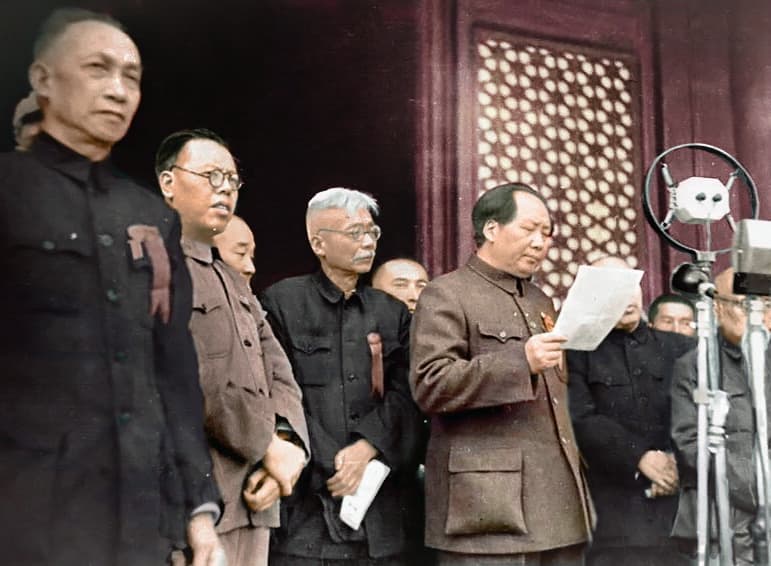Communist China — A Short History
The People’s Republic turns 75 well launched on a new Long March aimed at the defeat of the free democracies and the rise to global eminence of the heirs to Mao.

President Xi is using the 75th anniversary of his regime to threaten Free China’s independence and stress what he sees as Communist China’s inevitable rise to global preeminence. It’s an apt moment to mark the mistakes that led to the stamping out of democracy on the mainland when Mao won China’s Civil War in 1949 — summed up then in America with the lament “Who Lost China?” — and to weigh the prospects for the future of self-rule on the mainland.
Even from the distance of 75 years, the Communist victory over the Free Chinese forces led by Generalissimo Chiang Kai-shek still retains its power to shock — in part because it could have been avoided if American policy-makers had been more clear-eyed. Chiang was the successor of the pioneer of Chinese democracy, Sun Yat-sen, a contributor to The New York Sun, and Free China was America’s ally during World War II.
Chiang, though, was fighting against two enemies during the global conflict: The Empire of Japan, as well as Mao’s Communist Party, which paid lip service to helping the war effort while biding its time until the fight ended. After Japan’s surrender, Chiang’s forces were exhausted by their long fight — and Mao set in train his guerilla campaign, backed by the Soviets, to stamp out democracy and put all of China under the thumb of Communism.
As China’s Civil War raged, the Truman administration wrung its hands, uncertain which side to back. The problem, as Chiang saw it, was that “young and naive American military officers in China believed” Mao’s “propaganda,” as biographer Jay Taylor observes, and even senior officials at Washington were duped. The communists posed as freedom-loving agrarian reformers, so America’s left shrugged off the prospect of Mao taking over.
Chiang knew better. His experience with the communists had taught him that they only pose as peace-makers “to paralyze their opponents’ will to fight and thus to render them easier to subdue.” America’s foreign policy mandarins failed to grasp that truth. In 1946, President Truman’s envoy to China, George Marshall, rather than backing Chiang in his existential fight with the Soviet-backed Mao, urged the two sides to come to terms — at any price.
By 1949, even as America was spending lavishly to fend off Soviet encroachment in Europe with the Marshall Plan, Truman’s State Secretary, Dean Acheson, refused to aid Free China, and Chiang’s position deteriorated. Congressman Walter Judd warned that the Chinese “who believe in genuine freedom” were faced with “disaster.” Acheson merely sighed that in Asia “preponderant power has now clearly passed to the Communists.”
Late in 1948, the wife of Free China’s president, Madame Chiang, flew to Washington in a last-ditch bid for help from Truman. Yet “Give ‘em Hell” Harry, whose moral clarity was acute when he had recognized Israel earlier that year, was unmoved, likening support for Free China to “pouring sand in a rat-hole.” That paved the way for Mao’s triumph on October 1, 1949, consigning millions of mainland Chinese to decades of tyranny.
At the time, a Sun editorial noted that losing China to the Soviets was not a foregone conclusion, even as Moscow rushed to recognize Mao’s regime. Soviet ambitions, the Sun wrote, would run “into an equally consistent Chinese nationalism.” The Sun compared it to the “long-imagined meeting between an irresistible force and an immovable object.” Indeed, America did try, under Nixon and Carter, to exploit the split between the two communist powers.
In the end, though, Beijing has forged a path based on its own self-interest, feigning support for Western ideals about free trade in order to enter the World Trade Organization, which fueled the Communists’ rise. Today, Beijing and Moscow have reforged ties in a new authoritarian challenge to the Free World. Their revived alliance serves to underscore how high the stakes were in 1949 when America failed to realize the dangers posed by the Communists.

